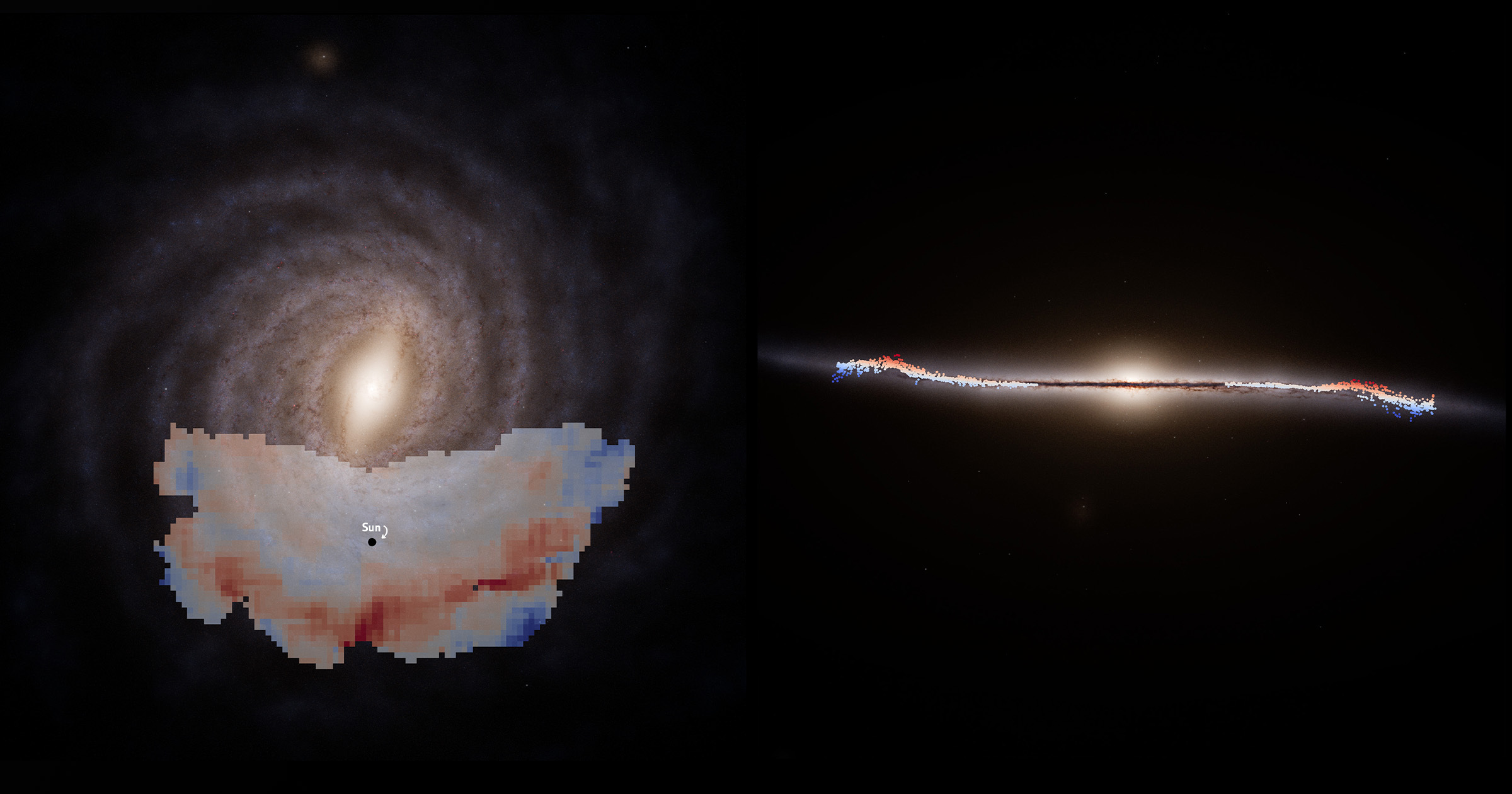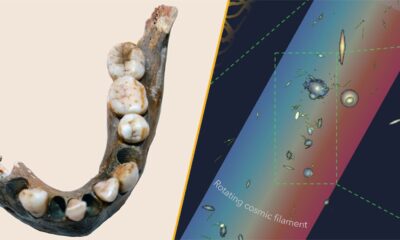Science
Astronomers Discover Colossal Wave in the Milky Way Galaxy

Astronomers have identified a colossal wave rippling through the Milky Way galaxy, a discovery made possible by data from the European Space Agency’s Gaia space telescope. This wave, which influences a vast region of stars and cosmic dust, originates from the galaxy’s center and extends across a significant portion of its structure. The findings were publicly released on March 15, 2023, and highlight the dynamic nature of our cosmic environment.
The new images reveal that the Milky Way resembles a massive ocean gyre, with stars moving in a wave-like pattern. Observing the galaxy from a vertical perspective, researchers noted that stars appear to float above and below the central disc, akin to fish bobbing in water after a boat passes. This visual representation illustrates the intricate motions within our galaxy, suggesting a complex interplay of gravitational forces.
According to a study published in the journal Astronomy & Astrophysics, researchers analyzed the positions and velocities of over 20,000 young stars. The study’s first author, Eloisa Poggio, an astronomer at Italy’s Istituto Nazionale di Astrofisica, remarked, “The intriguing part is not only the visual appearance of the wave structure in 3D space, but also its wave-like behavior when we analyze the motions of the stars within it.” The stars exhibit both radial and vertical systematic motions, caught in a wave that spans between 30,000 to 65,000 light years from the Milky Way’s nucleus.
The origin of this wave pattern remains uncertain. One hypothesis suggests that it could be the result of a smaller dwarf galaxy having passed through or been absorbed by the Milky Way in the past. Such an encounter could leave behind traces, manifesting as the observed wave formation. Previous simulations support this cannibalistic theory, indicating that interactions between galaxies can produce significant structural changes.
Another potential explanation involves the Radcliffe Wave, a gaseous region located approximately 500 light years from our solar system. However, the study’s authors indicated that the two phenomena are likely not directly connected, as the Radcliffe Wave is smaller and situated in a different area of the galaxy.
Future research, including further analysis of data from the Gaia telescope, promises to deepen our understanding of the Milky Way’s structure and dynamics. Each new study adds to the growing body of knowledge about our galaxy, revealing its complexities and the forces that shape it.
As astronomers continue to explore the Milky Way, the implications of this colossal wave offer exciting prospects for future discoveries. The ongoing examination of cosmic phenomena will undoubtedly uncover more about the intricate workings of our celestial home.
-

 Technology5 months ago
Technology5 months agoDiscover the Top 10 Calorie Counting Apps of 2025
-

 Health3 months ago
Health3 months agoBella Hadid Shares Health Update After Treatment for Lyme Disease
-

 Technology7 days ago
Technology7 days agoOpenAI to Implement Age Verification for ChatGPT by December 2025
-

 Health3 months ago
Health3 months agoErin Bates Shares Recovery Update Following Sepsis Complications
-

 Technology4 months ago
Technology4 months agoDiscover How to Reverse Image Search Using ChatGPT Effortlessly
-

 Technology3 months ago
Technology3 months agoElectric Moto Influencer Surronster Arrested in Tijuana
-

 Technology1 month ago
Technology1 month agoDiscover 2025’s Top GPUs for Exceptional 4K Gaming Performance
-

 Technology5 months ago
Technology5 months agoMeta Initiates $60B AI Data Center Expansion, Starting in Ohio
-

 Technology5 months ago
Technology5 months agoRecovering a Suspended TikTok Account: A Step-by-Step Guide
-

 Health3 months ago
Health3 months agoAnalysts Project Stronger Growth for Apple’s iPhone 17 Lineup
-

 Health5 months ago
Health5 months agoTested: Rab Firewall Mountain Jacket Survives Harsh Conditions
-

 Lifestyle5 months ago
Lifestyle5 months agoBelton Family Reunites After Daughter Survives Hill Country Floods





















